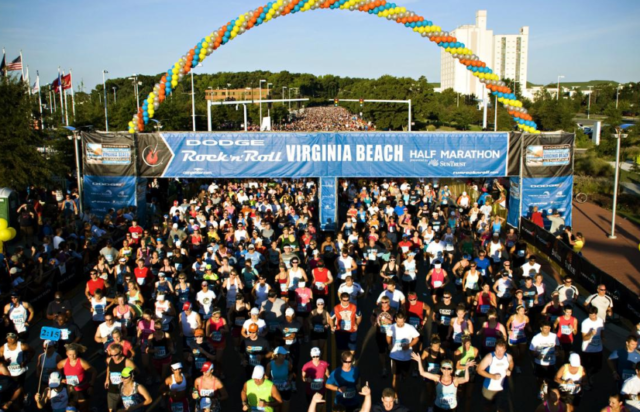With a robust portfolio of their own races and high volume of timing and consulting work for nearly 100 additional events on the Eastern Seaboard, Jerry and Amy Frostick of J&A Racing are well known nationwide for their event production expertise.
We recently caught a few minutes of Jerry’s time to bend his ear about operations day musts before he launched into another fall racing season. Here are some tips that are among his “musts” for a successful race production experience.
1. Don’t be afraid to delegate, even if your event is small. The majority of the contract races that J&A works throughout the year are less than 500 runners. But to provide a professional experience, hire timers and operations experts who know what they’re doing. You’ll save yourself a lot of stress and heartache.
2. Watch that budget – but there may be areas where you don’t want to be frugal. Jerry admits that the one expense he doesn’t balk at is having medical personnel on hand during a big race day. “I want to make sure we are covered. If something were to happen, I want to make sure we did everything we could.”
3. If you’re in charge on race day, your actual responsibilities might be – nothing? That’s right. “As the race director, on race day you’re going to want to be available to do nothing but concern yourself with handling the problems and issues that arise,” Jerry notes.
4. When bringing in your staff and volunteers, make sure you choose people who understand the spirit in which your event is being held. For the Frosticks (pictured below), that means hiring people who are customer service driven and understand that the ultimate goal of the day is for the runner to have a great time. “Your staff and key volunteers need to share the same passion, not just for the event, but for people,” says Jerry.
5. Have a communications plan, write it down, brief your team and practice. It could include something as simple and common as children being separated from their parents, something as likely as a thunder and lightning storm passing through that forces a start delay, or something as scary as a terrorist incident. Small races may not have to anticipate homeland security incidents, but the reality of today’s world is that every major participant and spectator sports event meets with the FBI and Homeland Security prior to race day so that everyone is informed and briefed on emergency protocols. (Your city permitting officials will be able to educate you further on this.)
6. Timing your race, if it’s small, might be optional. Medals are probably not. Runners love them and they’re an expected part of a positive race day experience.
7. Small doesn’t mean easy. “I think a 200 person race is the same amount of work as a 15,000 person race,” says Jerry. “For it to be a good one, you have to make sure that those 200 people have the best time possible.’
8. If you’re hoping to raise money for charity, be realistic about your expectations. Due to overhead and permitting costs, the profit margins for charity races are not large. Be pragmatic about raising as well as dollars. And on race day, make sure you (the organizer) have time to talk to people about the importance of your cause. “Often the person putting together the event has the most passion for that cause,” says Jerry. “My advice is to have someone else be the race director.”
9. When soliciting sponsors, think strategically about the value they can provide on race day. A news station in the Virginia Beach area offers its weather radar expert to J&A for no charge, which can be helpful when thunderstorms are rolling through on race morning. Medical is another area where a hospital sponsorship can make a great value in kind contribution.
10. Whether you’re going into race production for the first time or a longtime event producer, don’t forget to think like a runner. “The bottom line for us was that we were runners, and so we focused on what we would want as runners,” Jerry said. Simple advice – but a strong place to start no matter what decision you’re trying to make.

